The Grabow and Her Sisters: Livingston’s Historic Hotels
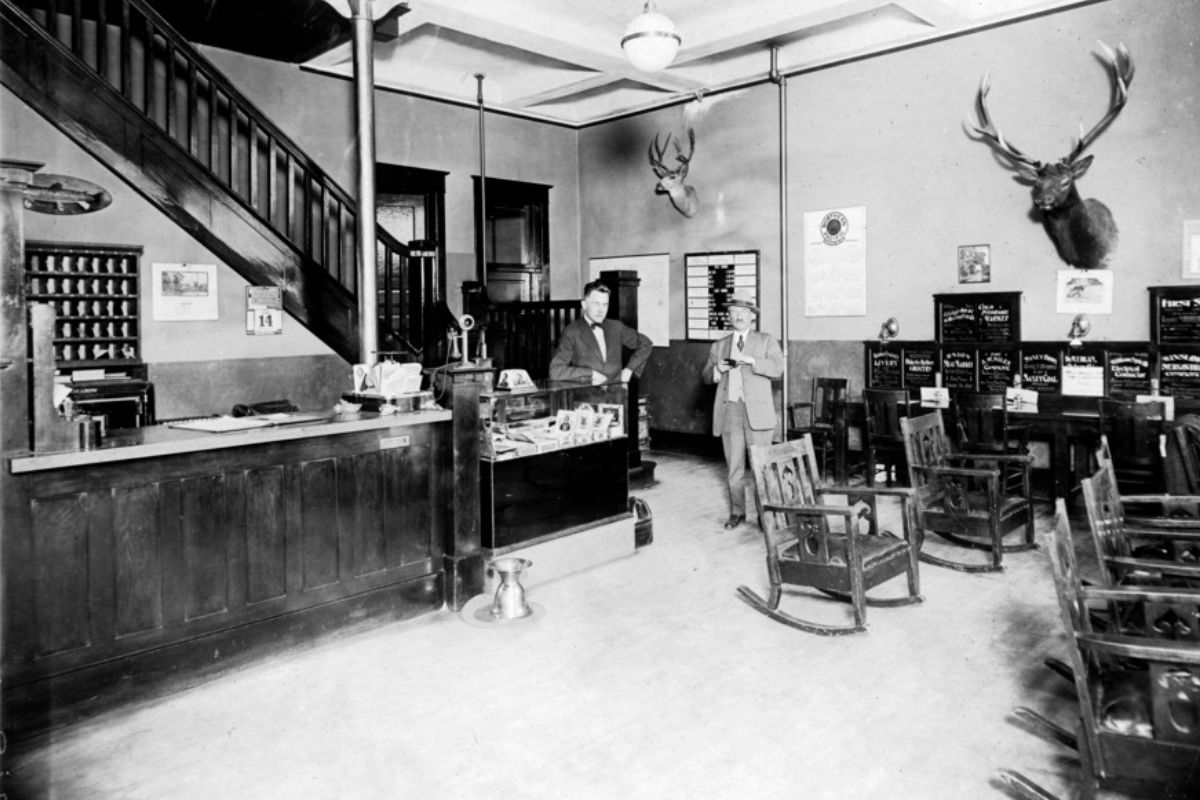
Looking out the third-floor window of the Grabow Hotel, from the comfortable confines of the Lake Suite, it's hard not to imagine how it must have been over 100 years ago.
At the turn of the 20th century, the Northern Pacific Railroad often billed Yellowstone National Park as Wonderland. The frontier may have been more or less settled, but here was a place, set aside in an act of national wisdom, where anyone could witness the West as it was. Only, perhaps, even better. Because where else could you see geysers and grizzlies in the same (admittedly vast) space?
Quickly, Yellowstone National Park joined the Valley of the Kings, the Colosseum, and the Hagia Sophia as places that anyone should see before they die—providing they had the means to get there, and the hardiness to make it there. And in, say, 1908, getting to Yellowstone, for those who would travel by rail, meant a stop in Livingston, the original first National Park in the world. From there they would board the Yellowstone Park Branch Line and travel to Cinnabar or, after 1903, to an established but for 20 years largely bypassed outpost called Gardiner, and then onto 16-person stagecoaches that would take travelers to the lodges or camps therein.
The National Pacific Railroad sleeper cars that arrived at Livingston may have been comfortable enough as train rides go*, but the subsequent stagecoach ride bordered on roughing it. Opportunities to perform one's toilet were going to be rare, visitors were made to understand. Those who were partial to taking the occasional bath would do well to seek lodgings in Livingston, as there would be no more baths for some time.
At its peak, when as many as 30,000 people a year passed through Livingston on their way to Yellowstone, more than twenty hotels served the area. Crowned heads, presidents, statesmen, writers, and painters all stayed in Livingston hotels. Some of the hotels' names live on today, like the Grabow or the Murray. Others, like the Grand and its adjoining opera house, or the Albermarle, with its three-story aviarium, are gone now. Gone, too, are the dusty streets rutted with horse and carriage tracks, and the Northern Pacific cars disgorging passengers en masse. The men, for the most part, no longer carry rifles. The women, for theirs, have abandoned parasols and petticoats.
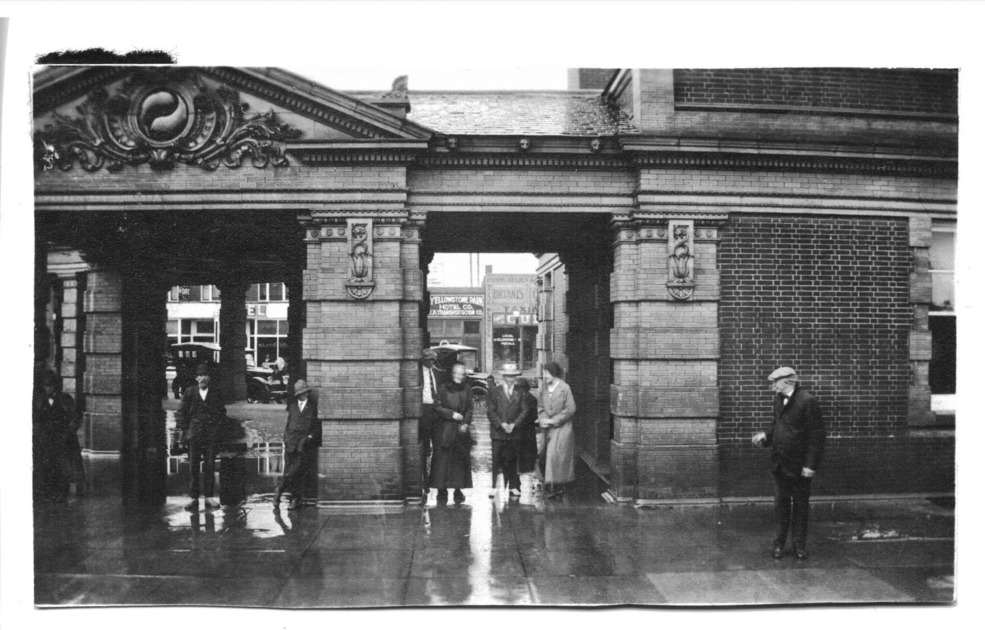
Still, for all the changes wrought by time, the character of the town in that period is largely preserved today, as is the Grabow.
Many, about to embark on the wilderness, therefore chose to seek lodging in Livingston. H. F. Sanders wrote in his three-volume History of Montana (1913) that visitors "will usually find themselves directed to the Grabow Hotel, one of the finest hostelries in the state," and adding additional praise for its "modern hotel building... fitted with the finest equipment, with hot and cold running water in every room, European cafe in connection, and every known convenience for the comfort of [the hotel's] guests." A later volume, Montana: the Land and the People by Robert George Raymer, concurred when it declared that the Grabow Hotel, "while possessing all the modern features and conveniences of the up-to-date caravanseries, also has that indefinable something that makes the weary traveler feel at home." The high-ceilinged lobby had rows of rocking chairs under the watchful eye of a taxidermied elk head, and the long wooden back bar was well-appointed with high-proof refreshment. In short, nothing was lacking.
The Grabow was built by German-born entrepreneur William Grabow. William did whatever he could to make money. He owned a hotel and restaurant called the Tivoli, dabbled in milling flour and manufacturing bricks, and secured the liquor license for Park County and Yellowstone National Park, as well as the right to sell Pabst Blue Ribbon Beer from his store in the Grand Hotel. Comfortably successful in these ventures, Grabow applied for a loan from PBR to build a new hotel, writing that the "character of the population, including such a vast number of single men working on the railroad and a large number of tourists through the summer... makes a lodging house very valuable property... especially valuable if it should be equipped with modern conveniences including baths." The loan was granted, and the hotel erected.

William would die tragically during the 1918 Spanish flu epidemic, leaving the management of the hotel to his wife, Elizabeth, and their sons. Elizabeth, who was warm-hearted and generous even during challenging times, valiantly tried to save the business, when the Depression hit hard. Family stories relate that Elizabeth fed many hungry families in the dining room of the Grabow, free of charge. The hotel was challenged and the Grabows lost it. That loss, writes Elizabeth's granddaughter Patricia, was like "breaking a collective family heart."
By the 1980s, the once grand Grabow Hotel was nearly a ruin.
Today, it's anything but a ruin; it thrives again.
Patricia is its savior, and she brims with understandable pride at having the hotel back in her family. She also exudes love for her incredible grandmother, who she remembers as a vibrant ninety-five-year-old with white hair so long she could sit on it.
Patricia bought the building back after retiring from her job as a school principal and teacher in Alaska. She had stopped by Livingston just to see the old family stomping grounds again, but found herself profoundly moved to try to get the hotel fixed up and open. She set herself the challenge of meeting or exceeding the standards set by William when he first opened the hotel which would be the envy of Livingston. And after years of her hard work and that of her son, Chris, painstakingly restoring and fixing the hotel's rooms, she reopened it after restructuring the building as a condominium and ultimately opening a number of spaces as full guest rooms. Today, you can book a stay at the Grabow Hotel online, and if you do you'll pass some very pleasant nights there in beautifully decorated and maintained suites.**
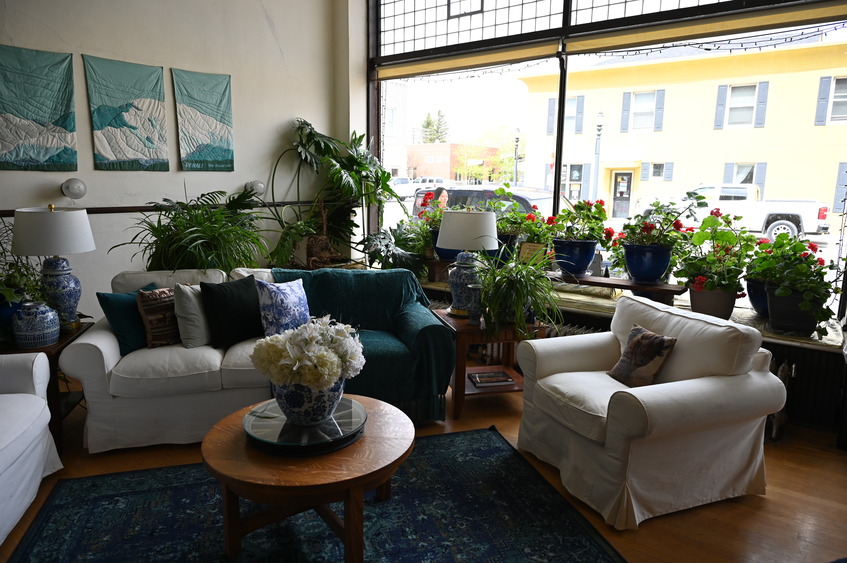
If you are lucky enough to stay on a chilly night you are blessed to periodically hear the original single pipe heating system with its old-fashioned radiators clink and clank as they turn on, hissing like somnolent snakes. In 1911, when the Grabow Hotel was first opened for business, that noise must have been soothing because it meant that you were warm and in bed, the wilderness and the cold temporarily at bay. But it must have also reminded them that there would be no such comforts on the stagecoach to the Park. Today the radiators' sibilant air vents are a brief passage back to the reassuring warmings of another day.
Patricia sees her success as a potential model for the rest of downtown Livingston. With so many beautiful and historic hotels, and with nearly as much demand for tourists in Livingston as during its fin-de-siècle heyday, Grabow envisions many of those remaining hotels converted to their original use, or made into online rentals. This will help keep their character, as well as share their singular beauty with today's travelers and tomorrow's. She sees a future in which the Original Gateway to Yellowstone, the first national park in the world, becomes an essential part of the Park experience once again. Listening to her describe this vision, you can understand both its beauty and economic appeal.
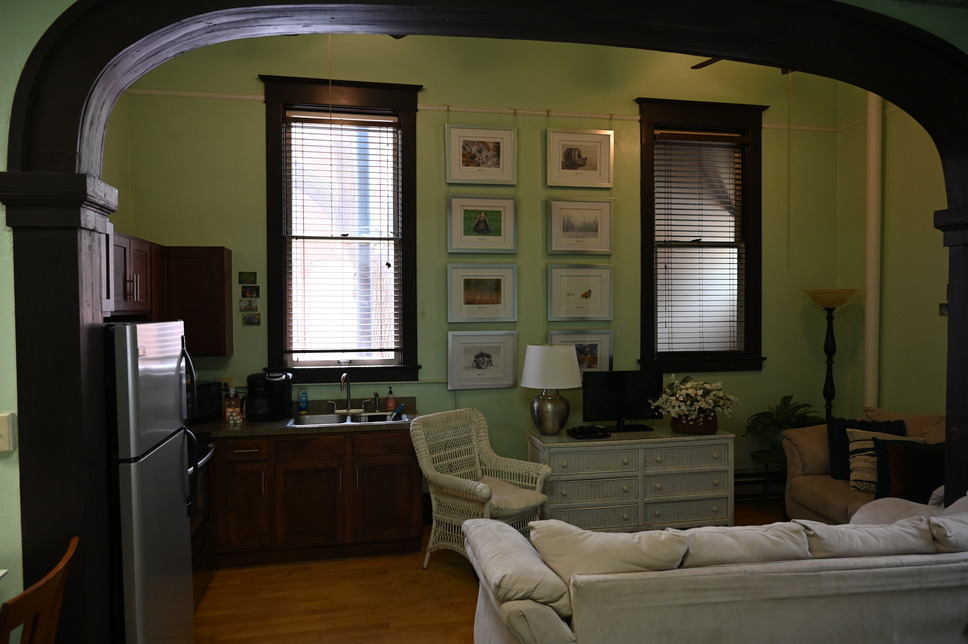
After all, with Livingston's deeply rich heritage of antique Western hotels like the Grabow, who in their right mind would stay at the typical chain hotel you can stay at anywhere?
Century-plus-old historic stays like the Grabow Hotel and its historic sisters are a different and richer experience. Look out the window and imagine what it would have been like, more than a century ago, to spend one last night in comfort, half fearful and half excited, before beginning an arduous, sublime journey into Wonderland.
*The relative comfort of the train ride could be variable; Rudyard Kipling, on an 1892 trip to Yellowstone, saw a conductor put a man's head through "a double plate-glass window" before leaving him, "spurting blood at every hair—a scarlet-headed and ghastly sight," at the next stop.
**The author and his family stayed one night at the Grabow Hotel and liked it so much they extended it to two. The only problem with that scheme is the author and his family liked it so well that they wish they had made it four nights, or rounded up to a week.
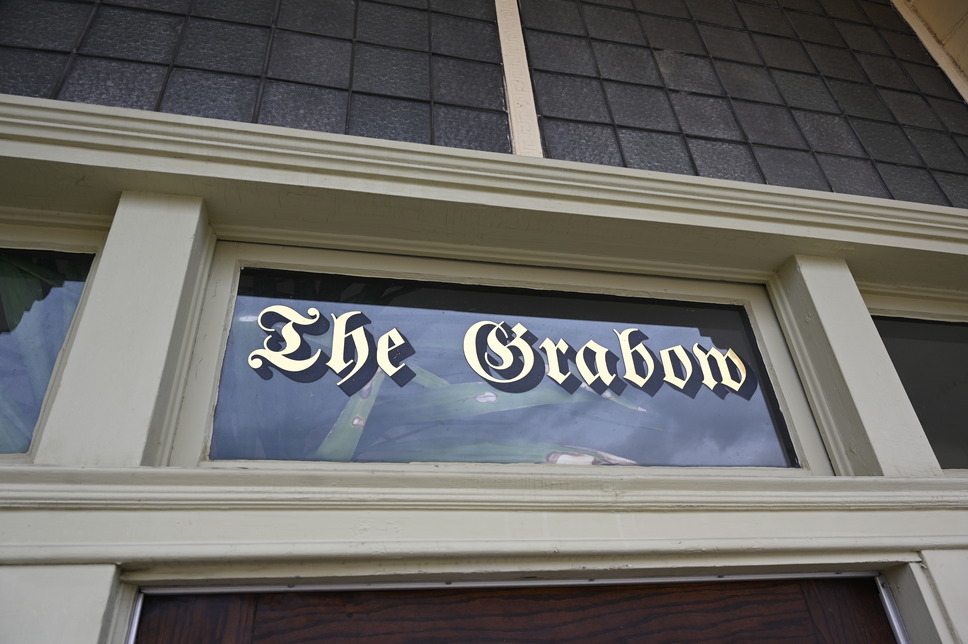
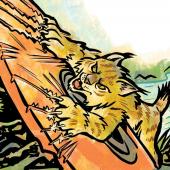



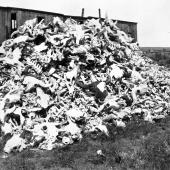
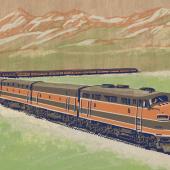






Leave a Comment Here